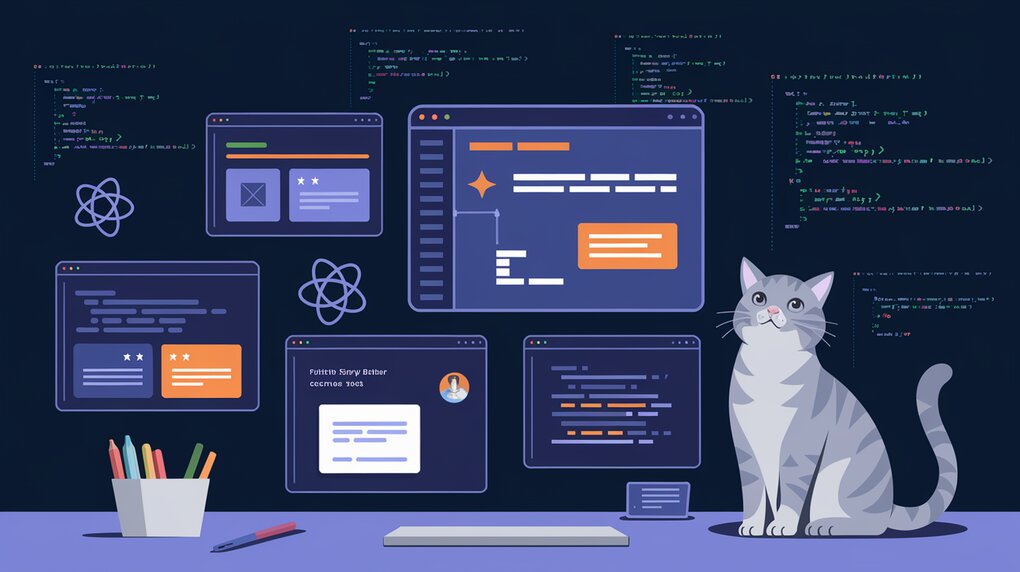
Unleashing Slate's Power: Crafting Rich Text Editors in React
Slate is a powerful and flexible framework designed for building rich text editors in React applications. It provides developers with a completely customizable foundation to create sophisticated editing experiences tailored to their specific needs. Whether you’re building a simple note-taking app or a complex content management system, Slate offers the tools and flexibility to bring your vision to life.
Key Features
Slate comes packed with a range of features that make it stand out in the world of rich text editing:
- Customizable to the core: Every aspect of Slate can be customized to fit your specific requirements.
- Nested document model: Slate uses a nested document model, allowing for complex content structures.
- Collaborative editing support: Built with real-time collaboration in mind, making it suitable for team-based editing environments.
- History management: Undo and redo functionality is built-in, with the ability to customize its behavior.
- Cross-platform compatibility: Works seamlessly across different browsers and devices.
- TypeScript support: Fully typed, providing excellent developer experience and code reliability.
Installation
Getting started with Slate is straightforward. You can install it using npm or yarn:
Using npm:
npm install slate slate-react
Using yarn:
yarn add slate slate-react
Basic Usage
Let’s dive into a basic example of how to set up a Slate editor in your React application:
import React, { useMemo, useState } from 'react'
import { createEditor, Descendant } from 'slate'
import { Slate, Editable, withReact } from 'slate-react'
const SimpleEditor = () => {
const editor = useMemo(() => withReact(createEditor()), [])
const [value, setValue] = useState<Descendant[]>([
{
type: 'paragraph',
children: [{ text: 'A line of text in a paragraph.' }],
},
])
return (
<Slate editor={editor} value={value} onChange={newValue => setValue(newValue)}>
<Editable />
</Slate>
)
}
In this example, we create a simple editor with a single paragraph. The useMemo hook ensures that the editor instance is only created once. The Slate component manages the editor state, while the Editable component renders the editable content.
Advanced Usage
Slate’s true power lies in its customizability. Let’s explore some more advanced features:
Custom Elements
You can define custom elements to represent different types of content:
import { Element } from 'slate'
const Leaf = ({ attributes, children, leaf }) => {
return (
<span
{...attributes}
style={{ fontWeight: leaf.bold ? 'bold' : 'normal' }}
>
{children}
</span>
)
}
const CustomElement = ({ attributes, children, element }) => {
switch (element.type) {
case 'quote':
return <blockquote {...attributes}>{children}</blockquote>
default:
return <p {...attributes}>{children}</p>
}
}
const AdvancedEditor = () => {
// ... editor setup ...
return (
<Slate editor={editor} value={value} onChange={setValue}>
<Editable
renderElement={props => <CustomElement {...props} />}
renderLeaf={props => <Leaf {...props} />}
/>
</Slate>
)
}
Custom Commands
Slate allows you to define custom commands to manipulate the editor content:
const CustomEditor = {
isBoldMarkActive(editor) {
const marks = Editor.marks(editor)
return marks ? marks.bold === true : false
},
toggleBoldMark(editor) {
const isActive = CustomEditor.isBoldMarkActive(editor)
if (isActive) {
Editor.removeMark(editor, 'bold')
} else {
Editor.addMark(editor, 'bold', true)
}
}
}
// Usage in a component
const EditorWithCommands = () => {
// ... editor setup ...
return (
<Slate editor={editor} value={value} onChange={setValue}>
<button onMouseDown={event => {
event.preventDefault()
CustomEditor.toggleBoldMark(editor)
}}>
Bold
</button>
<Editable
// ... other props ...
onKeyDown={event => {
if (!event.ctrlKey) {
return
}
switch (event.key) {
case 'b': {
event.preventDefault()
CustomEditor.toggleBoldMark(editor)
break
}
}
}}
/>
</Slate>
)
}
Plugins
Slate’s plugin system allows you to extend its functionality:
import { withHistory } from 'slate-history'
const withCustomPlugin = editor => {
const { insertText } = editor
editor.insertText = text => {
if (text === '@') {
// Custom behavior for '@' character
return
}
insertText(text)
}
return editor
}
const PluginEditor = () => {
const editor = useMemo(() =>
withCustomPlugin(withHistory(withReact(createEditor()))),
[]
)
// ... rest of the component
}
Event Handling
Slate provides various event handlers to customize the editing experience:
const EventHandlingEditor = () => {
// ... editor setup ...
return (
<Slate editor={editor} value={value} onChange={setValue}>
<Editable
onKeyDown={event => {
if (event.key === 'Enter') {
event.preventDefault()
// Custom enter behavior
}
}}
onPaste={(event) => {
// Custom paste behavior
}}
onDrop={(event) => {
// Custom drop behavior
}}
/>
</Slate>
)
}
Conclusion
Slate offers a powerful and flexible framework for building rich text editors in React. Its customizable nature allows developers to create unique editing experiences tailored to their specific needs. From basic text formatting to complex document structures, Slate provides the tools necessary to bring your vision to life. As you delve deeper into Slate’s capabilities, you’ll discover even more ways to enhance your editor’s functionality and user experience.
